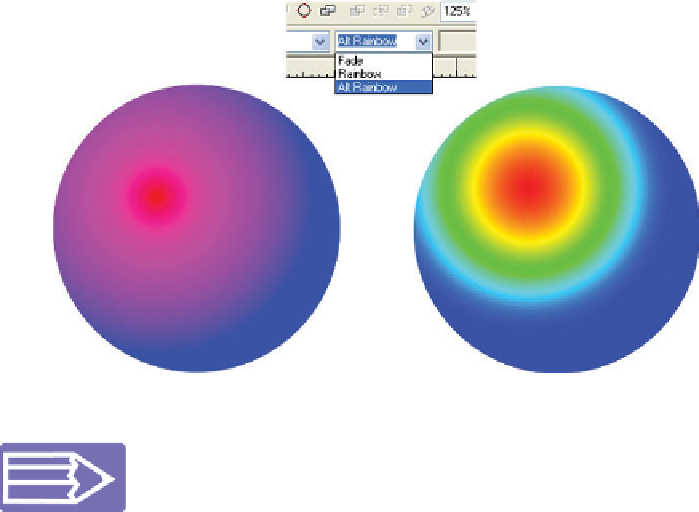Graphics Programs Reference
In-Depth Information
Red-to-blue Rainbow
Red-to-blue Alt Rainbow
The standard Fade effect for gradients can occasionally produce muddy transition colors,
because the start and end colors are not neighboring colors on a color wheel. This is where
you can use the Rainbow effect to clean up a muddy transition. Alternatively, you can put
intermediate colors along the gradient direction line, described later in this chapter.
Repeating a Gradient's Colors
By default, the gradient's Fill Tiling option is set to Simple—a
transition across an object from start to end color, and that's it.
However, when the Fill Tool is selected and a gradient-filled
object is selected, on the Infobar you have the Fill Tiling option,
which you can set to Repeating. When you do this, the start
point of the gradient is used to position the beginning location
for the gradient, but the end control point controls not only
direction for the fill but also the number of times the gradient
repeats within the object. Here's how to use Repeating:
1.
Create a circle.
2.
Apply the Circular type gradient to it by using the Fill Tool
and the Styles Fill Type drop-down list on the Infobar.
Set the start point as a medium yellow and the end
3.
control point for the gradient as a rich red.
Click the Fill Tiling drop-down and choose Repeating.
4.
5.
Drag the end control point toward the start control point.
Be careful not to accidentally hypnotize yourself while
doing so.


